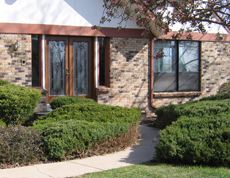
With shapes ranging from ground-hugging juniper bushes just 6 inches high to towering juniper trees 130 feet tall, and colors from steely blue to shimmering gold, there's a juniper that suits nearly every landscape need. Subsequently, question is, how big does a juniper bush get? A number of species are cultivated as ornamentals and are useful for their timber. Juniper, (genus Juniperus), genus of about 60 to 70 species of aromatic evergreen trees or shrubs of the cypress family (Cupressaceae), distributed throughout the Northern Hemisphere. With shapes ranging from ground-hugging juniper bushes just 6 inches high to towering juniper trees 130 feet tall, and colors from steely blue to shimmering gold, there’s a juniper that suits nearly every landscape need. With this consideration in mind, is Juniper a bush or a tree? Juniper has long been a popular ornamental garden plant for its four-season interest, ability to grow in most regions, and virtually carefree nature. Instead of being flattened like other conifers, juniper foliage is arranged around the branch and is usually prickly and sometimes sticky to the touch. Juniper leaves are scale-like, needle-like or awl-shaped, and typically pressed close to the branches. Against this background, what does a juniper shrub look like? Sift through the dirt with your hands to remove any leftover roots. Prune any roots with your pruning saw that are keeping the bush from being removed. Pour more water on the area to expose the root system. Water the ground around your juniper bush.
JUNIPER BUSHES HOW TO
Common juniper bark is red-brown and peels off in thin, vertical strips. How to Remove a Juniper Bush Cut off all branches of the juniper bush. Juniper berries on green branch on blurred nature background. They are evergreen with needle-like and/or scale-like leaves.They can be either monoecious or dioecious. The adult tree shape is often narrowly columnar. Close up on Bush of juniper, the evergreen coniferous plant with scale-like leaves. Junipers vary in size and shape from tall trees, 2040 m (66131 ft) tall, to columnar or low-spreading shrubs with long, trailing branches. These plants are considered deer-resistant (but we make no promises).Some common junipers have spiny needle-like leaves that grow in whorls of three: The leaves are sharp-pointed and glossy green with a broad white band on the upper side. The rate of growth is slow for these low-growing, wide-spreading shrubs that only grow a foot or two tall. They're cold hardy, thriving anywhere in South Florida, as well as being drought tolerant once established.
JUNIPER BUSHES FULL
These plants do best in full to partial sun. At first glance, you may think this type of plant looks like an "up-North" shrub.but the texture, color and pattern of growth can lend a grassy, beachy look against a backdrop of tropicals. These shrubs are softer to the touch than parsonii and stay about a foot tall. An even smaller variety that's commonly grown is Blue Pacific - and a look-alike known as Dwarf Shore.
JUNIPER BUSHES WINDOWS
It's foliage is somewhat prickly, making it a good plant under windows to deter burglars. But when your juniper shrubs get infected with fungal infections and succumb to them, it will be ideal for you to remove them and stop them from transferring them to other shrubs within your garden. They make beautiful boundaries, hedge, and makes the overall garden layout perfect. The most common variety - 'Parsonii' - is sometimes called "Parsons Juniper." This shrub can eventually grow about 2-1/2 feet tall. Juniper Bushes are brilliant companions for garden plants and trees. Landscaping - often surrounding a focal point such as a showy palm orīuilders landscape many new homes in Florida with these plants because of their hardy nature and ease of care. Its foliage is somewhat prickly, making it a good plant under windows to deter burglars. This shrub can eventually grow about 2-1/2 feet tall. Plants mature, and they play an effective, understudy role in The most common variety - Parsonii - is sometimes called 'Parsons Juniper.' This shrub can eventually grow about 2-1/2 feet tall. Their silvery or blue-green color fades to more of a soft green as the

These are supremely simple-to-grow plants that don't get too tall, do spread wide, and are often used for low-maintenance groundcover plants.


 0 kommentar(er)
0 kommentar(er)
